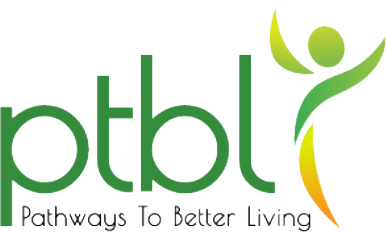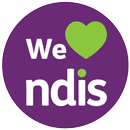Pathways to Better Living Pty Ltd – Child Safe Policy
Introduction
The protection of children and young people is a cornerstone in safeguarding and improving the lives of children and young people with disability. While providing supports and services under the NDIS, workers are uniquely placed to identify and respond to the needs and vulnerabilities of children or young people with disability. Everyone has a responsibility to protect the wellbeing and safety of children or young people whom they have contact, and report any case a child or young person is suspected to be at risk of significant harm
Policy Objective
This policy aims to ensure that the organisation provides supports and services in a child-safe environment and that concerns about the welfare or safety of children and young people are responded to appropriately. The purpose of this policy is to:
- set out appropriate standards of behaviour and practices for people working and volunteering with children and young people (Code of Conduct)
- provide standards by which the organisation can be held accountable to workers, volunteers, parents, guardians, carers, children and young people that are involved with the organisation
- increase worker awareness of factors that create a risk of harm to children and young people and the strategies in place to minimise risks
- build worker knowledge of how to identify if a child or young person is, or may be, at risk of harm and how to respond appropriately to allegations, concerns or instances of harm
- ensure that all workers understand reporting requirements and processes to be followed when making a report.
Applies to all sites and services
Applies to all representatives including key management personnel, directors, full time workers, part time workers, casual workers, contractors and volunteers
Definitions
| Term | Description |
| child | Anyone under the age of 16 years. |
| reasonable grounds | Defined by: first hand observations of the child, young person or familywhat the child, young person, parent or another person has disclosedwhat can reasonably be inferred based on professional training and/or experience. |
| significant harm | Any case where there is reasonable grounds to suspect a child or young person is experiencing, or has experienced: physical abusesexual abuseneglect, including:supervisionphysical shelter/environmentfoodmedical caremental health careeducationproblematic sexual behaviourpsychological harmrelinquishing carecarer concerns, such as:parent/carer substance abuseparent/carer mental healthparent/carer domestic violenceor there are concerns for an unborn child. |
| young person | A person over 16 years but under 18 years. |
When is a child or young person at risk?
A child or young person is at risk when they have suffered, or there is a likelihood they will suffer, harm. The relevant harm may be physical, emotional or psychological. A child or young person is also at risk where the parent or guardian is unable or unwilling to care for the person.
Reporting concerns about children and young people at risk
All suspicions that a child or young person is at risk must be reported to key management. Suspicions that a child is at risk must also be reported to the appropriate state/territory child protection hotline.
All concerns that do not meet the threshold of child at risk, but which involve a concern about the welfare or safety of a child are to be reported to key management.
The below table provides a reference for local state/territory authorities and legislation related to reporting children and young people at risk.
| State/territory | Local authority | Relevant local legislation |
| NSW | Department of Family and Community Services | Children and Young Persons (Care and Protection) Act 1998 (NSW) |
| QLD | Department of Children, Youth Justice and Multicultural Affairs | Child Protection Act 1999 (Qld) |
What is a child safe environment?
Child safe environments are safe and friendly settings where children and young people are protected and feel respected, valued and encouraged to reach their full potential. To provide an environment safe for children and young people, we will:
- take a preventative, proactive and participatory approach on child wellbeing and safety issues
- seek out and embrace the opinions and views of children and young people on issues relating to our services that they consider important or impact them
- take action to protect children and young people from harm.
Working with children and young people
The standards and requirements below identified the professional boundaries, ethical behaviours that are accepted and behaviours that are unacceptable. All staff are required to abide by and follow these standards and requirements.
Child safe code of conduct (commitment)
- maintain professional and courteous relationships with children and their families
- provide services in a way that does not exploit or abuse our position
- listen to the views of children or young people and respect what they say and involve them when we make decisions, especially about matters that will directly affect them
- respect children and young people’s rights, background, culture and beliefs as set out in the UN Convention on the Rights of the Child
- comply with all relevant commonwealth, state or territory laws protecting children and young people
- follow mandatory reporting requirements for children or young people suspected to be at risk of significant harm
- report any concerning staff conduct towards children or young people, including any suspected risk of significant harm to a child, to the key management personnel
- safeguard children or young people at all times and not place them at risk of abuse, or condone behaviour which is unsafe
- use appropriate language for the age and understanding of the child or young person, and avoid confusing or age-inappropriate discussions with sexual, discriminatory or violent references
- avoid any actions or words intended to threaten, intimidate, shame, humiliate, belittle, embarrass or degrade children or young people
- not attend work affected by illegal drugs or alcohol, consume them whilst on duty or supply them to children or young people in our care
- not smoke whilst on duty
Recruitment and worker screening
The organisation will comply with and carry out working with children checks in accordance with state/territory requirements of the National Disability Insurance Scheme Act 2013 (Cth).
Our recruitment practices will take account of risks and other factors that impact on children and young people. We will review our recruitment and human resources management practices regularly to make sure that we are aligned with best practice approaches for the protection of children and young people.
Worker risk assessments will be completed prior to supports being provided by those workers.
Communication and review of children and young people protection policy and systems
All new workers, including volunteers and contractors, will be trained on the requirements of this policy. They will have access to this document at all times through Employment Hero.
All participants under the age of 18 and their families will be provided with information about this policy.
All parents and/or guardians of children being supported will be provided with a copy of the “Child Safe” policy either via email or a hard-copy.
[1]Breach of child safe policy
- failure to disclose—all adults in Australia with a reasonable belief that an adult has committed a sexual offence against a child have an obligation to report that information to the police
- failure to protect—key management personnel will commit an offence if they know of a substantial risk of child sexual abuse and have the power or responsibility to reduce or remove the risk, but negligently fail to do so
- breach of this policy may result in disciplinary action; however, a serious breach may be deemed a criminal offence under relevant legislation.



